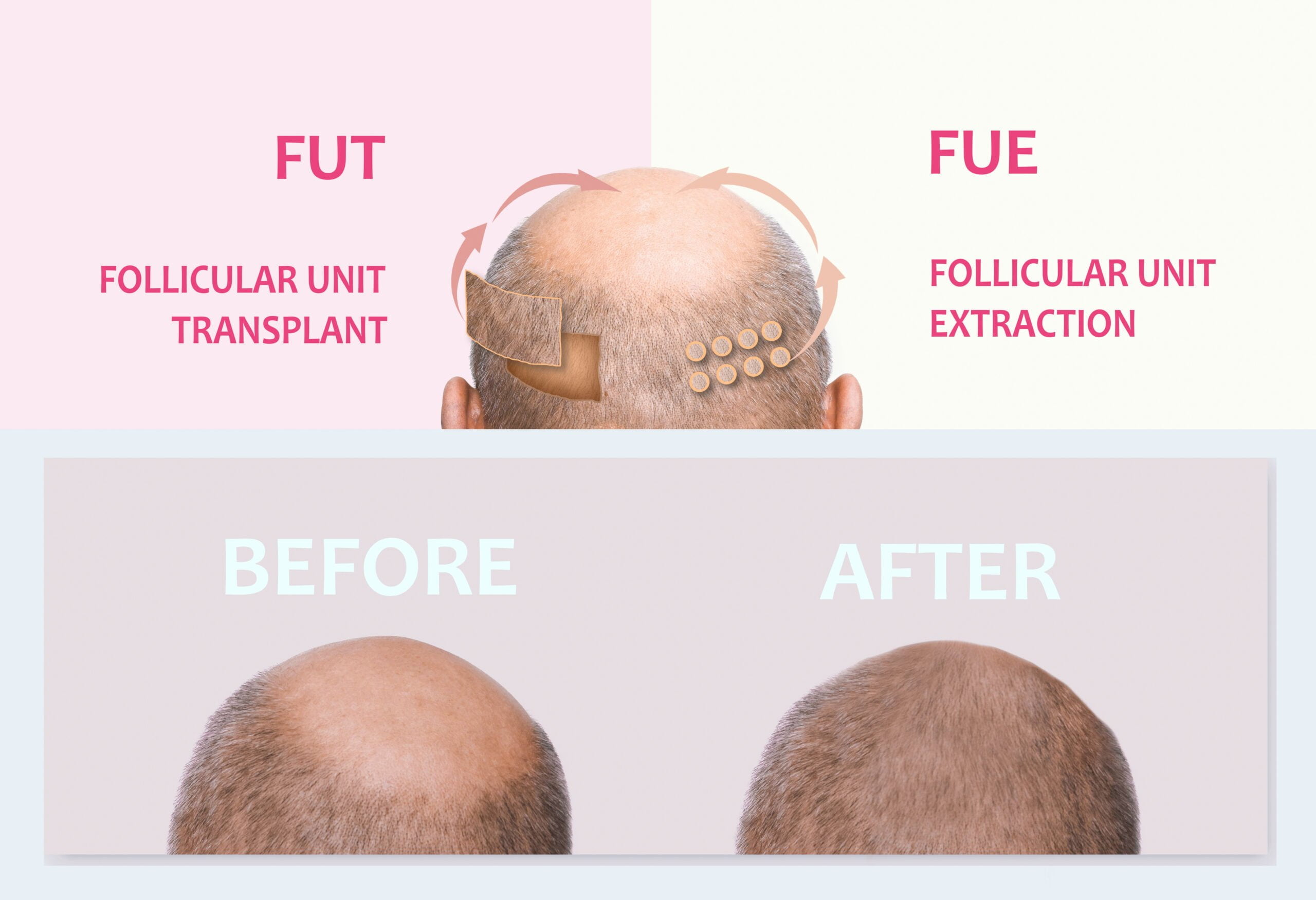Types of Hair Transplant: Which Hair Transplant Methods Is Best for You?
For many people, hair loss can be frustrating and embarrassing. The problem is that the former condition is pretty common, affecting both males and females as they age. Some people can even go bald in their 20s or 30s.
Luckily, several hair restoration methods, such as hair surgery, can help you grow your hair back! In this article, we’ll take a closer look at the different types of hair transplants. We’ll also discuss non-surgical treatments that help with hair loss. So, stick around for all the details!
Non-Surgical Hair Treatment
As the name implies, non-surgical hair treatments refer to restoration methods that don’t involve invasive procedures. Those treatments are generally less expensive and less time-consuming. They also have little to no downtime, so you can proceed with your daily activities right after the treatment!
So, what are some of the popular non-surgical treatments?
Topical treatments, like minoxidil, medications, and hair regrowth therapies, such as lasers, are all examples of non-surgical treatments.
Although some of the former procedures are more effective than others, non-surgical hair treatments won’t provide drastic improvements compared to hair transplants. That’s especially true for significant hair loss, like in male pattern baldness.
Such genetic diseases cause the hair follicles to shrink, produce thinning, and eventually stop growing hair. Consequently, topical treatments that stimulate hair growth, such as shampoos, won’t work.
However, non-surgical restoration methods are useful for preventing further hair loss and treating the early stages of baldness.
Here’s a detailed explanation of each non-invasive hair restoration procedure:
Minoxidil
You’ve probably heard about minoxidil since it’s the only over-the-counter medication for hair loss.
Commercially, minoxidil is sold as Rogaine or Theroxidil. It’s available in two concentrations: 2% and 5%. Additionally, the former drug is suitable for both males and females.
So, how does minoxidil work?
Once you apply the topical drug, sulfotransferase, an enzyme present in the scalp, changes minoxidil into minoxidil sulfate. The latter is the active form of this over-the-counter hair loss medication. It shortens the resting phase of the hair, the telogen phase.
Consequently, your hair enters the anagen, or growth phase, quickly. Not only that, but minoxidil extends the anagen phase, causing increased hair length and diameter!
However, Rogaine isn’t a magic bullet for balding. It prevents hair from thinning as long as you continue taking the medication long-term. Suddenly stopping the drug can lead to severe hair loss.
Medications
Doctors can prescribe medications alongside other treatments to help treat hair loss. Those drugs generally stop your body from producing certain hormones that cause baldness.
Finasteride and spironolactone are among those medications used to treat androgenic alopecia. The former is sold under the brand names Proscar and Propecia. However, unlike Minoxidil, finasteride is available only with a doctor’s prescription.
The drug works by blocking the action of 5-alpha-reductase. The former is an enzyme that converts testosterone into dihydrotestosterone, the root cause of male pattern baldness.
Similarly, doctors prescribe spironolactone to treat female hair loss caused by androgenic alopecia. It does so by slowing the production of androgens, male sex hormones. Generally, women take spironolactone when other hair treatments, like Minoxidil, aren’t effective.
Low-Level Laser Therapy
As the name implies, low-level laser therapy (LLLT) uses low-intensity light to stimulate cellular activity.
Such a laser has a wavelength between 650-1200 nanometers, which offers maximum tissue penetration. When used on the scalp, the light stimulates and prolongs the anagen phase. Consequently, it causes thinning hair to grow back.
Although LLLT was FDA-approved in 2007 for baldness treatment, more research is needed to determine the effectiveness of this hair restoration method.
Platelet-Rich Plasma
For those who don’t know, platelets are a component of blood. Its primary function is to stop bleeding in injured areas by forming clumps. Plus, it also helps in the healing process. For that reason, injecting platelet-rich plasma into the scalp might help treat hair loss.
The process involves drawing blood, separating the plasma through centrifugation, and using the liquid to promote follicle growth.
Surgical Hair Restoration Procedures
Hair transplants are the most effective treatment for a receding temples and hairline. That’s because the treatment provides full hair coverage and tends to last a lifetime. Some of the most well-known surgical hair restoration methods include FUE, FUT, DHI, NeoGraft, and ARTAS.
Here’s how each hair restoration procedure works:
FUT
Follicular unit transplantation, also known as the strip harvesting method, is one of the two primary surgical procedures to treat baldness in both genders. In this hair restoration method, the surgeon removes a hair strip from a donor site, usually from the back of the head.
The doctor then dissects the tissue to form grafts containing one to four hairs and implants them into the bald spots. This procedure typically leaves a linear scar, so it might prevent you from wearing your hair short. Additionally, it takes longer to heal from FUT than FUE.
However, follicular unit transplantation has several perks that set it apart from other hair transplantation procedures.
The former surgery is suitable for hair transplants requiring more than 4000 grafts. It also has a shorter operational time, generally between 4-8 hours. Sure, FUT can take up to 12 hours, depending on the number of grafts needed. Still, it’s a one-day procedure.
What’s more, FUT is more affordable, costing between $7,000 and $10,000, with most centers charging between $2.50 and $7 per graft. It also has a higher success rate than FUT for implanting many grafts.
FUE
FUE stands for follicular unit excision, a more advanced procedure than FUT. The process also includes harvesting hair grafts, each containing 1-4 hairs, from the donor area. Then, the surgeon implants the hair to cover up the baldness.
So, what’s the difference between FUE and FUT?
Unlike FUT, FUE involves extracting individual grafts instead of a hair strip. The surgeon uses a small cylindrical tool known as punches to cut around the hair follicle and remove the graft with fine forceps.
FUE is minimally invasive compared to FUT and doesn’t cause noticeable scarring. As a result, the recovery time of FUE is short, around a week. Plus, the surgeon can extract hair from other body parts, such as the chest!
The former procedure, however, is more expensive. Generally, FUE can cost anywhere from $8,000 to $50,000, with prices between $6-$11 per graft. It also has a longer operation time and isn’t suitable for implanting more than 4000 grafts.
DHI
Direct hair implantation (DHI) is FUE hair transplantation with a twist. Instead of manually cutting channels in your scalp and then inserting the harvested hair grafts, the surgeon uses a pen-shaped tool to do both procedures simultaneously.
Since this operation is a modified version of FUE, it has a similar operation time, recovery period, and results. Additionally, DHI’s maximum hair graft number is also 4000, and it usually takes 12 to 18 months to see complete hair growth.
Depending on the number of grafts and location, DHI can cost as little as $3,000 or as much as $21,000.
NeoGraft
NeoGraft is another modified version of the FUE technique. Similar to DHI, the former is a semi-automated procedure that uses a specialized wand-like tool to create an incision and implant grafts at the same time.
However, the NeoGraft system also extracts hair follicles through suction! Not only does that reduce follicular damage, but it can also increase the survival rate. That’s because the surgeon no longer removes the graft using forceps, which can cause trauma.
What’s more, NeoGraft has a similar operational time as the strip harvesting method—both of which are shorter than manual FUE. Consequently, the procedure reduces the cost of FUE hair transplants.
On average, NeoGraft hair transplant prices range from $5,000 to $15,000. While that isn’t low, it’s still more affordable than manual FUE.
ARTAS
Automated FUE, like ARTAS, is one of the latest technologies in hair transplantation. The automated procedure uses a robotic system to do the surgical operation without human intervention!
ARTAS uses imaging technology and advanced algorithms to extract, assess, and implant hair grafts. The process is minimally invasive and quicker than manual FUE. Not to mention, the automated procedure ensures that the extracted hair doesn’t stay outside the body for long.
Typically, hair grafts keep their quality for 6 hours once removed from the scalp. Any duration longer than that, and the hair follicles’ survival rate decreases—even when stored at low temperatures!
Since ARTAS shaves hours off the operation time, it’s better for complex hair transplants that take several days. The best part is that the former operation costs between $7,000 and $20,000, which is more affordable compared to FUE.
How to Prepare for Hair Transplantation
Regardless of the type of hair transplant surgery, your doctor will ask you to take some precautions to prepare for the procedure. Those include:
- Avoiding taking blood-thinning medications, such as aspirin, as they can increase bleeding.
- Quitting alcohol two weeks before the surgery because liquor causes blood vessels to widen, leading to bleeding complications and swelling.
- Not smoking at least a week before the operation since smoking decreases blood flow, affecting the healing process.
- Massaging your head for 10-20 minutes daily before the surgery date to increase scalp elasticity.
Conclusion
As you can see, several surgical and non-surgical methods can help treat hair loss. While the latter is relatively inexpensive, it’s still not as effective in treating baldness as hair surgery.
Generally, FUT and FUE are the two main types of hair transplants. The latter also included advanced hair restoration techniques such as DHI, NeoGraft, and ARTAS.
Each method has a different operational time, cost, and healing period. So, it’s best to consult with your hair transplant specialist to determine the right option for you. With the help of hair restoration procedures, you can enjoy a fuller head and regain your confidence!







